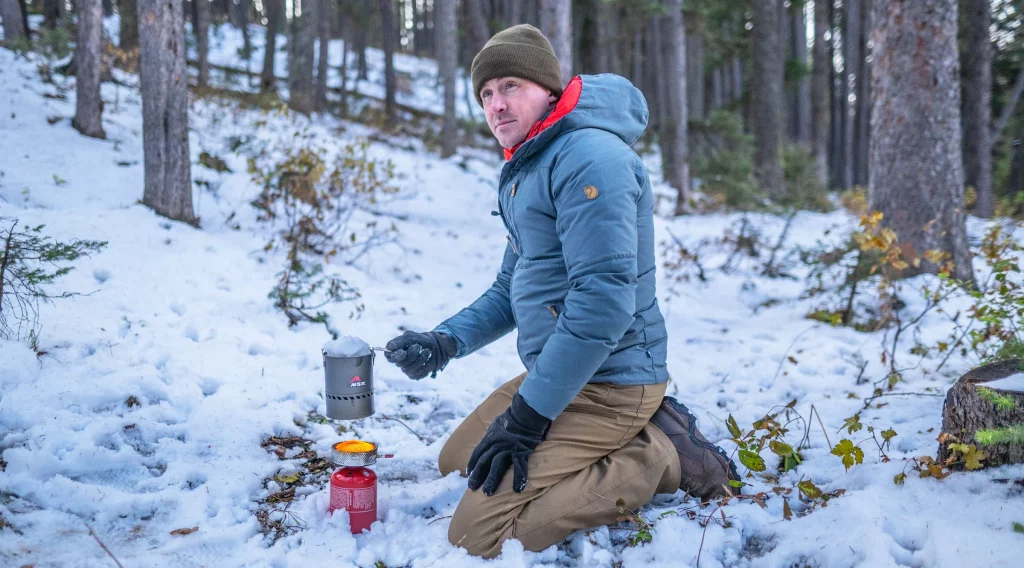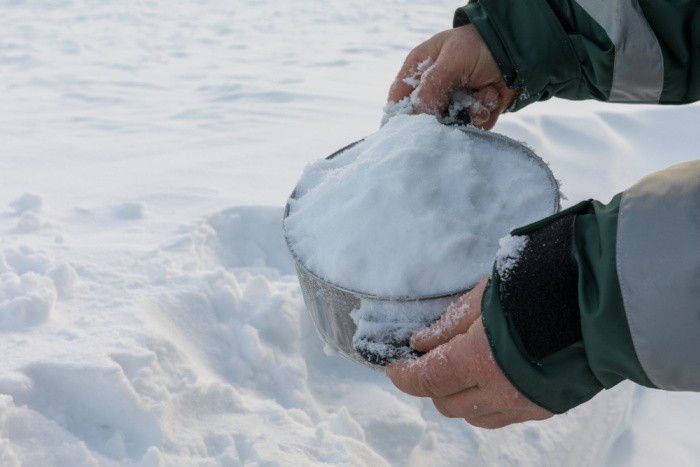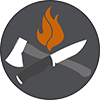Obtaining the knowledge on how long to boil snow to drink will save many people from unwanted consequences in the worst-case scenario which is running out of water supply.
Life depends on water, hence being able to change water from its frozen condition into its liquid state is a critical skill for anyone planning to spend any significant amount of time above the snow line.
Since the dawn of time, people have utilized various methods to gather rainwater for drinking. Can we assume that drinking melted snow is equally secure? Other than the fact that you should never drink melted yellow snow, is there anything intrinsically wrong with drinking melted snow?

How Long to Boil Snow to Drink
Although you can use clean snow in the winter to make drinking water, you still need to clean it first. The most reliable way to avoid viruses, bacteria, and parasites is to boil the snow. The most trustworthy advice comes from the CDC, also known as the Center for Disease Control.
Understanding the special qualities of water is essential before learning the skill.
Only when the temperature of the water is between 0°C and 100°C does it remain liquid. Depending on the altitude, the range can vary a little. The boiling point of water is 100°C, at which point it turns into gas. Water will freeze at temperatures below 0°C and turn into a solid form.
The simplest way to turn snow into clean drinking water is to allow it to boil for one minute below 2,000 meters of elevation or for three minutes above 2,000 meters.
Methods to Melt and Purify Snow
Even if the cleanest snow is most likely acceptable to consume or melt for a drink, you should always boil it, use a SteriPEN water purifier, or dissolve a chlorine dioxide tablet in it just to be safe. Even though the water might not be the greatest you’ve ever tasted, it will be the safest way.
Boiling
Collecting clean snow from outside the campsite is the greatest way to melt snow, and you should avoid yellow snow at all costs. Then, you should pour a small bit into the pan’s bottom and heat it slowly until it melts.
Since snow is primarily made up of air, a surprising amount of snow is needed to make one liter of water. Up until the necessary amount has been melted, keep adding little handfuls.
To save fuel, it is a good idea to cover the pan’s top. A similar result can be achieved over a fire if you are in an area with trees or other fuel.
Although it is typically believed that freshly melted snow is acceptable to drink without further treatment, you should also know that water that has been frozen is not necessarily safe to consume.
The freezing process does not eliminate microorganisms or germs, they just remain inactive until the snow or ice melts
When in doubt, with your knowledge of how long to boil snow to drink, boil the water for up to 10 minutes and proceed with the same caution you would with standing water.
Melting snow without a container or heat
Snow and ice can still be melted even without a heat-resistant pan by being suspended over a fire and letting the water drip into a container as it melts. A T-shirt or other porous material can be used to wrap snow, and sticks or ski poles can be used to support it.
You can suspend it over the fire without a container if you are melting sheet ice or hard crust snow. To ensure that it melts evenly, it should be split or chopped into doughnut-shaped pieces and flipped on the stick.
Also read: How to Purify Salt Water in the Forest

UV sterilization
A SteriPEN should be included on your list of essential goods if you go on winter hikes or spend a lot of time outdoors. The batteries are kept warm while you are moving because it is compact and may be worn around your neck.
A SteriPEN destroys the dangerous bacteria in the water using ultraviolet light. Its design is similar to that of an excessively huge thermometer that you may use to take your temperature. When you turn on the SteriPEN and dip it in melted snow, the wand portion of the device lights with UV light.
SteriPENs do not need to be submerged for very long, and they emit the maximum quantity of UV radiation necessary to kill bacteria. In fact, all you really need to do is use it as a spoon to stir the melted snow for a short while, and then you are done.
Chlorine dioxide tablets
If you are unable to boil your water and do not have a SteriPEN with you, you should use chlorine dioxide pills. To generate enough water such that the pills are even worthwhile, you will need a significant amount of snow, you should aim for at least a full glass.
It is important to use the product just as directed on the package and only with the recommended amount of water. Tablets containing chlorine dioxide must be used in extremely small amounts since they are just as strong and hazardous as bleach.
Fortunately, these tablets come with comprehensive instructions on the back that explain how much to take and how much water to use with that dosage.
How to Collect Snow
It’s important to think about the source of your snow and the prospective, underlying characteristics of the surface you scrape it from.
In more remote areas, it is often safer to gather snow for drinking water, but you should avoid doing so from the top surface of any man-made structures. The best and safest technique is to gather it while it is falling.
Whatever surface you choose to collect snow from, only collect the top layer and leave the lower levels in place. The fact that snow has landed on grass or another natural surface does not guarantee that it’s pure.
There is always a chance that pesticides or herbicides will seep into your freshly harvested snow from the surrounding area.
Additionally, never collect snow next to a road. Lead is one of the pollutants found in automotive exhaust, among other toxins. Snow that has been exposed to car exhaust won’t contain high toxic levels of lead, but any amount of lead is excessive; therefore, you should leave that snow where it falls.
Related: How to Find a Spring in the Woods
Conclusion
The safest course of action is to purify the melted snow using one of the techniques mentioned above, even if you think it’s safe to eat or drink snow from the pure, white snow. The last thing you want while venturing on your mountain journey is a sudden attack of dysentery or any other bacterial infection since you never know what can fall through the gaps.
